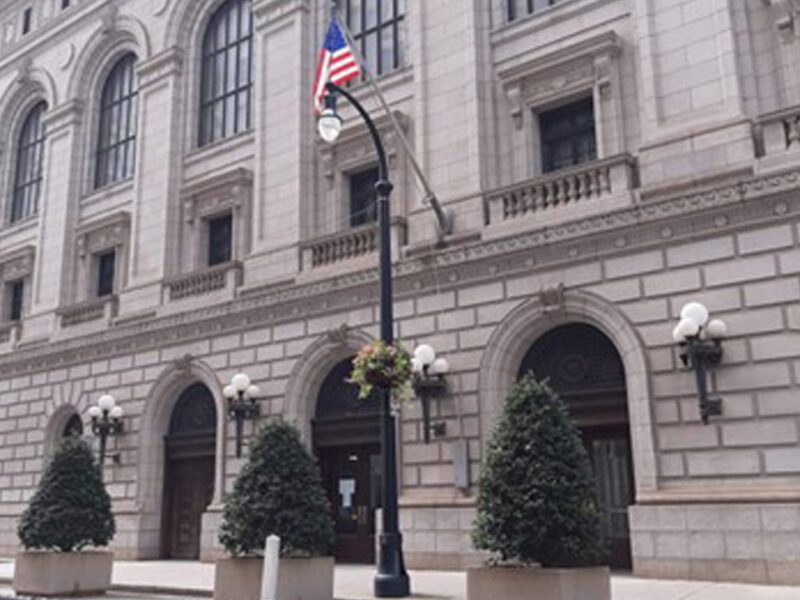
Sarasota Schools seeking $68 million in federal cash
Sarasota Herald-Tribune | by Ryan McKinnon | December 8, 2021
The Sarasota County School District is applying to receive $68 million in federal COVID-19 relief funding, which school leaders hope to use to get programs and systems in place that will offset the learning loss that has been a byproduct of the pandemic.
On Tuesday, the Sarasota County School Board was briefed on a draft plan on how to use the money. One challenge with the grant is that it is non-recurring, so the money is a one-time boost and can’t be expected to fund salaries.
That means a good chunk of the money will go toward professional development, curriculum and systems, and not necessarily to more staff or higher wages to carry out the remediation activities.
While much of it will go to support systems and not staff, Superintendent Brennan Asplen said the three-year grant length gave the district some wiggle room to use it on positions that they could later fund from the budget.
Asplen said the district would use some of the money to open 10 new pre-kindergarten classrooms in the next year, at a cost of roughly $180,000 each, and get additional reading coaches and academic specialists into schools.
“It is non-recurring, but we have three years to figure out how to pay for that out of the general fund,” Asplen said.
Once charter schools have received their share ($9.4 million), that leaves $58.6 million to offset the impact of COVID-19 on Sarasota County’s students.
The funding comes from the 2021-24 American Rescue Plan (ARP) Elementary and Secondary School Emergency Relief (ESSER) Fund.
A closer look at how the district wants to spend the money:
$21.1 million to “JumpStart continuous learning.” This money is available for schools to specifically provide academic interventions for students who are behind grade level.
$10.1 million toward student mental health needs. The money will go toward mental and behavioral health staff, programs to build students’ social and emotional skills, a “Youth Mental Health First Aid” program to teach educators how to help students in crisis.
The money will also fund professional development in implementing “restorative justice” programs that replace punishments like suspension or expulsion with strategies that address the behavior without removing students from school.
$5.45 million for “progress monitoring, data management and professional development.” Part of this will go toward streamlining data collection so the district can determine how effective academic remediation efforts have been since COVID-19 began.
$5.27 million to expand the district’s Pre-Kindergarten programs, with an emphasis on supporting children with special needs. The ESSER funds will go toward hiring the staff to oversee the district’s expanded pre-kindergarten offerings.
$3.1 million for summer academic programs. Under the proposal, the district would be able to expand access to tutoring, homework help, enrichment activities, arts and physical education programs over the summer.
$3.4 million in “indirect” costs. Many of the programs that will be funded through the grant create indirect costs, like higher electricity costs for a school that stays open later or additional bus routes to a new summer program. The $3.4 million equates to 5% of the total grant, which is a rate set by the state.
$1.2 million toward recruiting middle school and high school English/Language Arts teachers.
$639,729 for programs and professional development to help English language learners.
$560,311 to hire a new staff member and system focused on aligning student interests with college and career opportunities.
$489,433 to improve services for students with special needs.
The district will be soliciting feedback on these proposals through surveys on its website from now until Dec 10.
Board continues public comment debate
The School Board again discussed its public comment policy. Board meetings over the past year have been unruly at times, with large groups of parents and community members at times disrupting meetings and speaking out against mask mandates, racial issues, and curriculum.
New board Chairwoman Jane Goodwin revised a policy that the board had approved for advertisement last month.
The major changes, under the latest proposal, would:
- Reduce the amount of time people can speak during public comment from three minutes to two minutes per speaker.
- Limit the time for public comment to one hour.
- Require people addressing the board to state their name, address, and to state if they are affiliated with any particular group.
- Move public comment on non-agenda items to the end of the meeting. For example, if someone wanted to address the board about an item that the board was not discussing during the meeting, they could speak at the end of the meeting.
Board members Bridget Ziegler and Karen Rose oppose the changes, saying that they will limit public input and further divide the community.
Board members Goodwin, Shirley Brown, and Tom Edwards support the changes, saying that many members of the public have been deterred from attending board meetings over the last year because of disruptive behavior.
The board will continue the discussion in January and will likely not vote on a new policy until February.





